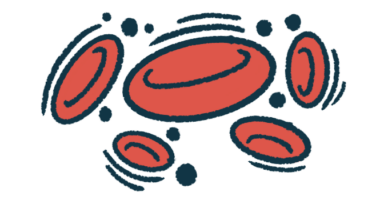Trial of PNH treatment ARO-C3 plans to start dosing patients this year
No serious side effects reported to date in healthy volunteers

ARO-C3, an experimental treatment being developed for paroxysmal nocturnal hemoglobinuria (PNH) and other disorders mediated by the complement system, appears to be working as intended in a group of healthy volunteers.
That’s according to interim data from an ongoing Phase 1/2 trial testing the Arrowhead Pharmaceuticals therapy in adults without the disorder.
The therapy has so far been generally well tolerated, with no serious side effects reported and no participants discontinuing the study due to adverse events.
The trial, called AROC3-1001 (NCT05083364), is expected to begin dosing people with PNH or complement-mediated kidney disease within the next few months.
Trial assessing safety, pharmacological properties of PNH treatment candidate
In people with PNH, blood cells lack certain surface proteins. As a result, a part of the immune system called the complement cascade becomes activated, ultimately destroying these cells.
There are three therapies now approved in the U.S. to treat PNH; all of them work by blocking the activation of the complement system to prevent blood cell destruction.
When the complement cascade is activated, it works a bit like a series of dominoes falling down, with one protein activating another protein, which in turn activates another, and so on. ARO-C3 is designed to lower the levels of C3, a protein that is involved in one of the earlier steps in the activation of the complement cascade.
Arrowhead, the company developing the therapy, noted that C3 is activated earlier than another complement protein, called C5. The C5 protein is the target of both Ultomiris (ravulizumab) and Soliris (eculizumab) — two approved therapies for PNH.
“Substantial unmet medical need remains in the treatment of multiple complement mediated diseases, including … paroxysmal nocturnal hemoglobinuria … despite the availability of approved complement C5 inhibitors that have significantly improved treatment,” James Hamilton, MD, chief of discovery and translational medicine at Arrowhead, said in a company press release.
“In addition, we believe C3 inhibition has interesting potential, as it is upstream of C5 in the complement cascade,” Hamilton said.
Another approved PNH treatment, Empaveli (pegcetacoplan), also targets the C3 protein, though its mechanism of action is different from that of ARO-C3. While Empaveli is designed to prevent C3 activation, ARO-C3 is designed to stop the protein from being produced.
ARO-C3 uses a technology called RNA interference (RNAi). When a gene is read to produce a protein, the code providing instructions for making the protein is copied into a temporary molecule called messenger RNA. This RNA molecule is then used by other cell machinery components as a template for making the protein.
The basic idea behind RNAi therapies such as ARO-C3 is to inactivate the messenger RNA of a specific gene, in order to reduce the amount of protein that is produced.
Arrowhead is conducting the Phase 1/2 AROC3-1001 trial to assess the safety and pharmacological properties of ARO-C3.
Substantial unmet medical need remains in the treatment of multiple complement mediated diseases, including … paroxysmal nocturnal hemoglobinuria.
The first part of the trial consists of testing the therapy in up to 42 healthy adult volunteers. The second part of the study intends to test the treatment candidate in up to 42 people with PNH or complement-mediated kidney disease. Dosing in the second part of the trial is expected to start in the first half of the year, according to Arrowhead.
Interim data from the healthy volunteer portion of the study indicated that treatment with ARO-C3 lowered the levels of the C3 protein as intended. At the highest tested dose, C3 levels fell by a mean of 88%, according to the company.
Levels of a marker of complement activation, called AH50, also decreased, by a mean of 91% with the highest dose of the therapy.
Pharmacological data also suggested the therapy, administered by a subcutaneous (under-the-skin) injection, may be amenable to dosing four times per year or even less frequently.
Participants generally tolerated ARO-C3 well, without any serious side effects or noteworthy changes in laboratory measures reported. The most common adverse events recorded during the trial included headache, seasonal allergies, COVID-19, and injection site reactions.
“ARO-C3 has achieved encouraging results in Part 1 of this Phase 1/2 clinical study, including a mean reduction of 88% in C3 and 91% in AH50 at the highest dose tested. These data in healthy volunteers provide us with further confidence as we begin Part 2 of the study, which includes patients with various complement mediated diseases,” Hamilton said.








